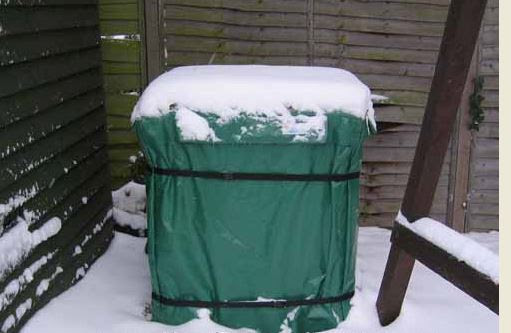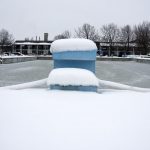We’ve Got You Covered.
|
When it comes to covering the equipment for the winter, a strong argument can be made either way. Equipment protected from the environment and UV rays will always last longer. Most pool equipment is made of plastic, either partially, or completely. The surface of the items will break down with long exposure to sunlight. In addition to UV exposure, the pH of rain in NJ is typically acidic. “Rainfall, unless buffered by cations in airborne particles, tends to be naturally acidic, with a pH of about 5.6. However, in much of the eastern U.S., due to anthropogenic emissions of SO2 and NOx, the concentrations of these acids in precipitation are so high that the pH of rain is often in the 3.5 to 5.0 range.” (Atmospheric Deposition: Acidity and Nutrients Page 1 – Updated 3/2016 Environmental Trends Report, NJDEP, Division of Science, Research, and Environmental Health http://www.nj.gov/dep/dsr/
Ok! So, we should cover our equipment for the winter!… Well, maybe not.
|
|
The classic method of covering the equipment for the winter is to lay a large tarp over the equipment, and either rope it tight or bungee cord it so it doesn’t blow into the neighbors’ yard during the winter. Simple enough. While the equipment is now protected from the environment, a habitat for woodland creatures has now been created. Tarped equipment is a safe-haven for critters, including mice, snakes, chipmunks, insects, etc, and creates a new home for the winter. These creatures are only doing what comes naturally, which also includes eating the insulation inside the heaters, the cartridges, and grids in the filters, and every bit of wire insulation they can get their paws and mandibles on. They’ve found the perfect shelter. Now comes the spring. You head out to open the pool for the season, and guess what you find under your tarp? That’s right. Nests. You pull the tarp off to find your equipment has been claimed as someone else’s domain. Hibernation is over. This is your eviction notice.
|
 |
|
Condensation is also a variable in this equation and can be created under the surface of the tarp. Temperature swings can create a cold climate under the tarp, but followed by a hot sunny day (New Jersey winter weather, am I right?) will generate condensation that is left dripping all over the equipment. Puddling may also occur, which is perfect for the Bed and Breakfast you’ve designed. At this point, you may consider installing a “Vacancy” sign, and all are welcome.
“Well, I’m confused. So which method is best?”
Honestly, the location of the equipment and personal preference should determine which path you choose to protect your equipment. But there is a third option.
|
 |
|
Pool equipment enclosures, such as sheds, or open-sided sheds in the shade are the best choice. These structures will permanently protect the equipment from harsh conditions. There is more of an upfront cost to this method, but in the long term, it will save on diagnosing and replacing damaged equipment.
|
Recent Posts






